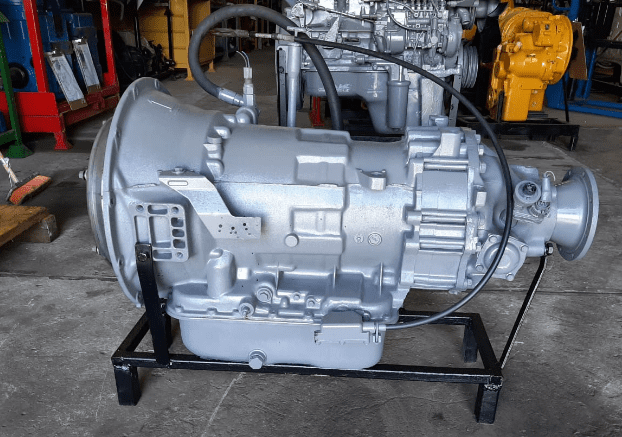[Top 7 Issues] Polaris Sportsman 800 Transmission Issues!
If you own a Polaris Sportsman 800, you may have experienced some transmission problems. These problems can be caused by a variety of things, but the most common cause is a worn-out clutch. The clutch is what allows the engine to transfer power to the wheels, and over time, it can wear down and cause the transmission to slip.
This can lead to all sorts of problems, from decreased performance to complete engine failure. If you’re experiencing any of these symptoms, it’s important to get your transmission checked out by a qualified mechanic as soon as possible.
If you own a Polaris Sportsman 800, you may have experienced transmission problems. These problems can be caused by a few different things, but the most common cause is a defective clutch. The clutch is what allows the engine to engage and disengage with the transmission, and if it is not working properly, it can cause all sorts of problems.
Another common cause of transmission problems is a leaking seals or gaskets. If your transmission is leaking fluid, it will eventually lead to damage and failure. If you are experiencing any type of transmission problem with your Polaris Sportsman 800, it is important to take it to a qualified repair shop as soon as possible.
Read More:
{Top 5} Polaris Xplorer 300 Transmission Problems
Trying to fix these problems yourself can often make them worse, so it is best to leave it to the professionals. They will be able to diagnose the problem and get your ATV back on the road in no time.

Credit: www.superatv.com
Why is My Polaris Sputtering?
There are a few reasons your Polaris may be sputtering. The most common reason is that the fuel mixture is too rich or too lean. This can be caused by a clogged air filter, incorrect carburetor settings, or a leaking intake manifold.
Another possibility is that the ignition system is not providing enough spark, which can be caused by faulty spark plugs or wires. If your Polaris is still under warranty, take it to a dealer for diagnosis and repair.
How Do You Shift Gears on a Polaris?
Assuming you are referring to shifting gears on a Polaris ATV:
There are two ways to shift gears on a Polaris ATV. The first is by using the clutch and lever system located on the left handlebar.
To do this, you will need to engage the clutch by pulling in on the lever, then use your left foot to press down on the gear shifter. Once the desired gear is selected, you can release the clutch and continue driving.
The second way to shift gears is by using the paddle shifters located on the right handlebar.
To do this, simply press either up or down on the paddle shifter until you reach the desired gear.
How Fast Does a 2008 Polaris 800 Go?
The 2008 Polaris 800 can reach speeds of up to 60 miles per hour. This speed is achievable on a variety of terrain, including snow, thanks to the sled’s powerful engine and design.
How Much Does a Polaris Sportsman 800 Cost?
Assuming you are referring to the 2020 Polaris Sportsman 800 EFI, the base model will start at $8,499. However, there are a number of different models and packages available which can affect the final cost. For example, adding power steering will increase the price by $1,200.
There are also a number of different ways to finance a Polaris Sportsman 800 EFI. Depending on your credit and the terms of your loan, you could end up paying anywhere from $9-$12 per month for 60 months. Of course, this will also vary depending on the final purchase price of the vehicle.
2005 Polaris Sportsman 800 EFI Shifter / Detent Pawl
Polaris Sportsman 600 Shifting Problems
If you own a Polaris Sportsman 600, you may have experienced some shifting problems. This is a common issue with this model of ATV, and there are a few things that you can do to fix it.
First, check the oil level in the transmission.
If it is low, top it off and see if that solves the problem. If not, then you will need to adjust the shifter cable. This is not a difficult task, but it is one that requires some patience.
Loosen the jam nut on the shifter cable using a wrench. Then, turn the adjusting barrel until there is about 3/16″ of play at the end of the cable where it attaches to the shifter lever. Once you have adjusted the cable, tighten down the jam nut and test out your ATV to see if the shifting problem has been fixed.
Polaris Ranger Transmission Disassembly
Polaris Ranger transmissions are some of the most complex and sensitive components in your vehicle. In order to ensure that your transmission lasts as long as possible, it is important to regularly disassemble and inspect it for wear or damage. This process may seem daunting, but with a little patience and attention to detail it can be easily accomplished.
The first step is to remove the transmission from the vehicle. This can be done by unbolting it from the engine block and then carefully sliding it out. Once the transmission is removed, you will need to drain all of the fluid from it.
This can be done by removing the drain plug at the bottom of the unit and allowing all of the fluid to drain into a catch pan.
Next, you will need to disconnect all of the electrical connections going to the transmission. There are typically two connectors, one for power and one for ground.
Once these are disconnected, you can begin taking apart the transmission itself.
Most transmissions are held together with bolts, so begin by removing all of these bolts until only the main housing remains intact. At this point you should have full access to all of the internal components of your Polaris Ranger transmission.
Inspect each component for wear or damage and replace any damaged parts as necessary. Be sure to also clean everything thoroughly before reassembling your transmission.
Once everything is back in place, bolt everything down tightly and refill your transmission with fresh fluid before putting it back in your vehicle.
With proper care and maintenance, your Polaris Ranger’s transmission should provide years of trouble-free operation!
Polaris General Transmission Rebuild
If you own a Polaris General, you know that it’s a tough machine. But even the toughest machines need maintenance and occasionally, repairs. When it comes to your transmission, a full rebuild may be necessary if there is extensive damage.
A transmission rebuild can be a big job, but it’s one that you can do yourself if you’re feeling up to the challenge. It’s important to have all the right tools and parts before getting started, as well as a good understanding of the process. With that said, let’s dive in and take a look at how to rebuild your Polaris General transmission.
The first step is to remove the transmission from the vehicle. This can be done by disconnecting the battery, draining the fluid, and then unbolting the transmission from its mounts. Once it’s loose, you can pull it out and set it on a workbench or similar surface.
Next, you’ll need to disassemble the transmission so that you can access all of its internals. This involves removing the case halves, as well as various other components like shafts, gears, and bearings. Be careful during this step so that you don’t lose any small parts or pieces.
Once everything is disassembled, it’s time for cleaning. All of the parts need to be thoroughly cleaned so that they’re free of dirt and debris before being reassembled. This step is crucial in order to ensure proper function after rebuilding your transmission .
After cleaning, inspection is next . You’ll want to closely inspect all of the parts for wear or damage . If any parts are damaged beyond repair , they will need to be replaced .
Once everything has been inspected , repaired (or replaced ), and cleaned , it’s time for reassembly .
This part is essentially the reverse of disassembly ; simply put all of the parts back together in their proper order and location . Again , pay close attention so that nothing gets misplaced or installed incorrectly . Once everything is buttoned up , your Polaris General ‘s transmission should be fully rebuilt !
Utv Transmission Rebuild
If you have a UTV with an automatic transmission, sooner or later you’re going to need to rebuild it. When that time comes, there are a few things you need to know. In this blog post, we’ll go over everything you need to know about rebuilding your UTV’s transmission, from what parts you’ll need to what tools you’ll need.
By the end of this post, you should be ready to tackle your transmission rebuild with confidence!
The first thing you’ll need for your rebuild is a transmission kit. This will include all of the necessary gaskets, seals, and bearings that you’ll need to properly rebuild your transmission.
Once you have your kit, it’s time to start disassembling your transmission. Begin by removing the pan and draining the fluid. Then remove the valve body and separator plate.
At this point, it’s a good idea to take some pictures so that you can remember how everything goes back together later on.
Next, remove the forward and reverse clutches as well as the stator assembly. Inspect all of these parts for wear and damage and replace any worn or damaged parts with new ones from your kit.
Once everything is inspected and replaced as necessary, begin reassembling your transmission starting with the stator assembly followed by the clutches and finally the valve body and separator plate. Be sure to refer back to your pictures if needed during reassembly.
Once everything is back together, install the pan and fill with fresh fluids before putting your UTV back into service.
With fresh fluids and properly functioning clutches & gears, your rebuilt transmission should serve you well for many miles (and hours) of fun!
Conclusion
A common issue with the Polaris Sportsman 800 is transmission problems. This can manifest itself in a few different ways, such as the bike not moving, gears slipping, or the bike becoming hard to shift. There are a few different things that can cause this issue, such as low fluid levels, worn out clutch pads, or a damaged belt.
Checking and servicing these parts will usually fix the problem.

